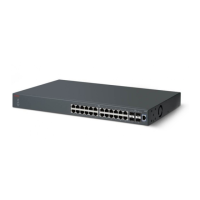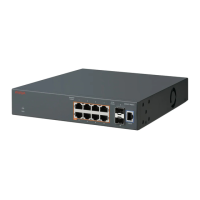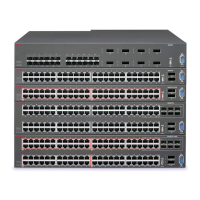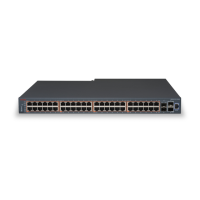Temporary base unit
If an assigned base unit fails, the next unit in the stack order automatically becomes the new
temporary base unit. The LED display on the front panel of the temporary base unit changes
to a steady amber state to indicate the change. When this happens, use the Base Unit Select
switch to designate the temporary base unit as the base unit until you repair or replace the
failed base unit.
Y
ou must designate a base unit because the automatic failover is only a temporary safeguard
and, if the original unit rejoins the stack, it does not resume base unit status. Also, if the stack
configuration loses power, the temporary base unit does not resume base unit status when
power is restored.
Important:
If the temporary base unit is not assigned as the new base unit, and the temporary base unit
fails, the next unit in the stack order becomes the temporary base unit. This process
continues after successive failures until only two units are left in the stack.
Redundant cascade stacking
The A
vaya Ethernet Routing Switch 3500 Series allows a stack of up to eight units into a
dualpath cascade stack. If any single unit fails, or if a cable is accidently disconnected, other
units in the stack remain operational.
In addition to increasing bandwidth, the software uses the cables to provide two paths between
units. If one path is interrupted, the data travels over the remaining path at half the normal
interswitch bandwidth.
The following figure shows a typical example of a stack configuration reacting to a failed
connection in the stack configuration.
Avaya Ethernet Routing Switch 3500 series stacking
22 February 2013

